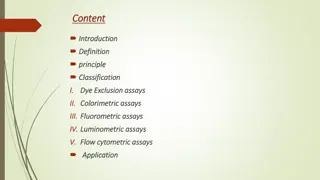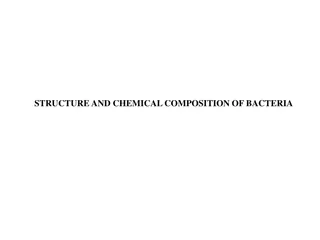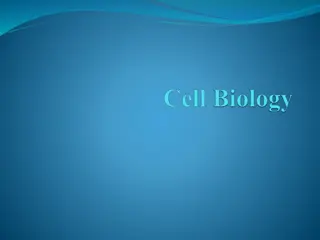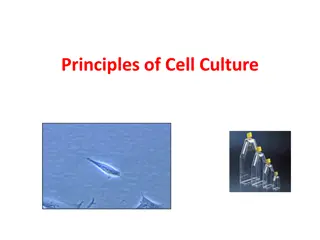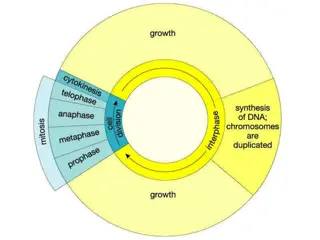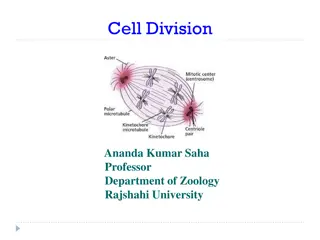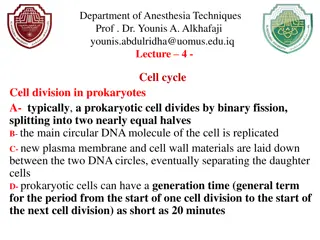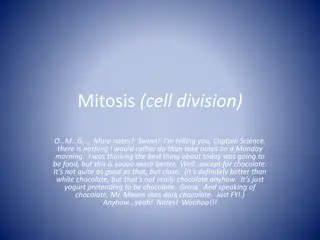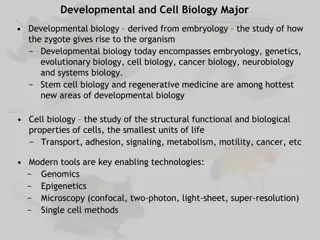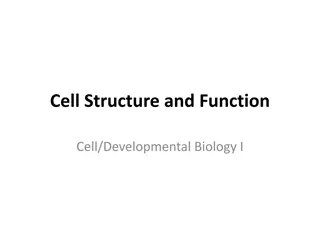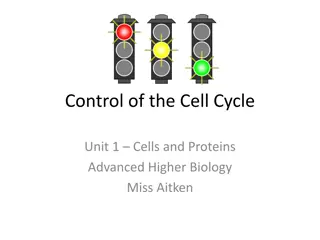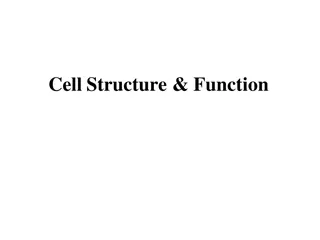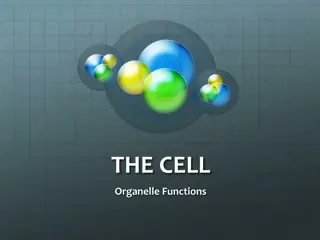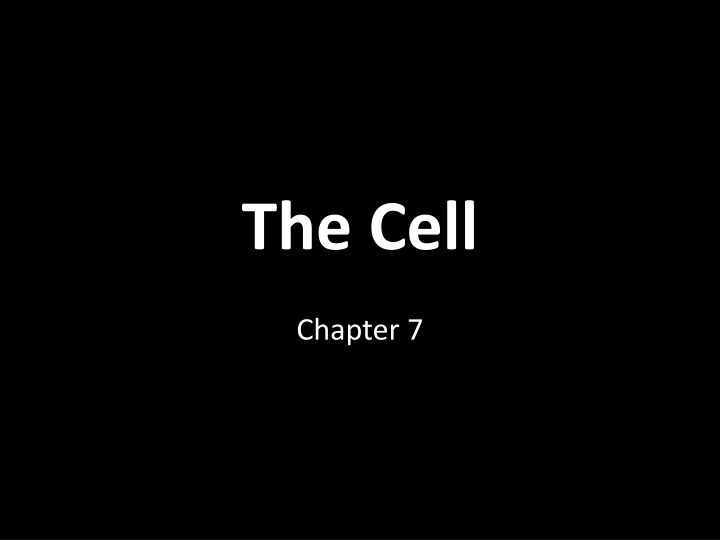
Understanding Eukaryotic Cell Structure and Function
Explore the fascinating world of eukaryotic cells, from their discovery by early scientists to the key components such as plasma membrane, nucleus, and cytoplasm. Learn about the Cell Theory, two cell types (prokaryotic and eukaryotic), and detailed cell parts like endoplasmic reticulum and nucleolus. Follow along to complete a chart and enhance your understanding of biology.
Download Presentation

Please find below an Image/Link to download the presentation.
The content on the website is provided AS IS for your information and personal use only. It may not be sold, licensed, or shared on other websites without obtaining consent from the author. If you encounter any issues during the download, it is possible that the publisher has removed the file from their server.
You are allowed to download the files provided on this website for personal or commercial use, subject to the condition that they are used lawfully. All files are the property of their respective owners.
The content on the website is provided AS IS for your information and personal use only. It may not be sold, licensed, or shared on other websites without obtaining consent from the author.
E N D
Presentation Transcript
The Cell Chapter 7
Introduction Robert Hooke, 1665 observed cork with a microscope and saw tiny boxes - called them cells Leeuwenhoek observed pond water and saw tiny animals made of one cell
Introduction Continued Schleiden discovered plants are made of cells Schwann discovered animals are made of cells Virchow discovered that cells come from other living cells
CELL THEORY 1. All organisms are composed of one or more cells. 2. The cell is the basic unit of organization. 3. All cells come from preexisting cells.
Two Cell Types Prokaryotic Lacks organelles - internal membrane bound structures single-celled organisms (Bacteria) Eukaryotic Contains internal membrane-bound organelles Can be single-celled or multi-celled organisms Two main types: plant and animal
Use the information in the following slides to complete the Eukaryotic Cell Parts chart on pages 45 and 46 of the biology resource manual. The ANALOGY section will be left blank.
Plasma Membrane All cells Regulates what enters and leaves the cell Provides protection and support
Cell Wall Plant cells only Protects and supports the cell
Nucleus Animal and Plant cells only Contains all the cell s DNA Surrounded by a nuclear envelope
Nucleolus Plant and Animal cells only Assembles ribosomes
Cytoplasm All cells Portion of the cell outside the nucleus Fluid inside the plasma membrane
Endoplasmic Reticulum Plant and Animal cells only Assembles lipids, proteins, and other materials in the cell
Ribosomes All cells Site where proteins are assembled
Golgi Apparatus Plant and Animal cells only Modifies, sorts, and packages proteins and other materials for storage in the cell or transport out of the cell
Vacuole Plant and Animal cells only, often very large in plant cells Stores water, food, waste, and other materials
Lysosomes Plant and Animal cells only Contain enzymes to break down molecules and recycle cell parts
Mitochondria Plant and Animal cells only Converts chemical energy stored in food into energy the cell can use
Chloroplasts Plant cells only Converts energy of the sun into chemical energy (site of photosynthesis)
Cell Locomotion Flagella Long projections that move with a whiplike motion Cilia Short hairlike projections that beat in a coordinated wave


